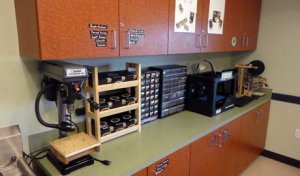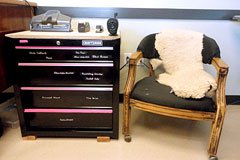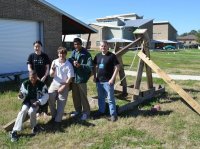Makerspaces for Students With Special Needs
Students with special needs and neurological differences can benefit from the hands-on process, experimental nature, and visible results of maker education.
Your content has been saved!
Go to My Saved Content.Maker education is a new school of educational thought which strives to deliver constructivist, project-based learning curriculum and instructional units. Makerspaces can be full high school workshops with a bevy of high-tech tools, or as small and low tech as one corner of an elementary classroom. What defines a makerspace isn't just the tools and equipment, but the learning that happens as students begin making and creating projects. Educators need to design these spaces to reach a diverse set of learners, particularly populations underserved in STEM subjects, and students with neurological differences, learning differences, and special needs. Makerspaces provide a number of benefits and opportunities for typical students. It just so happens that the type of learning Makerspaces promote best is also the type of learning that students with learning challenges need most.
Exploration and Execution
Students with neurological differences or other special needs have great gifts to bring into the classroom. They also bring a set of challenges which the teacher must be prepared to help each student manage. Students with neurological differences often have difficulty planning, organizing and executing complex tasks, navigating the intricate social community around them, modulating and regulating their emotions, and connecting their academic work to later career choices. As educators, we can leverage their strengths and interests to increase their engagement and learning -- just like we do for any other student. Any curriculum that we develop and deliver to our students must take into account these challenges and incorporate deliberately designed avenues for addressing them head on.
Maker education places a premium on the balance between exploration and execution. Small projects lend themselves to indefinite tinkering and fiddling, while larger projects need complex, coordinated planning. Often, small projects can organically grow into larger and larger projects. This deliberate process strengthens and enriches a learner's executive functioning skills. Additionally, communication and collaboration are two of maker ed's fundamental values. Makerspaces allow learners to practice their social communication skills in a variety of groupings, whether affinity-based or role-specified and teacher-assigned. It's important for both groupings to be present in student learning spaces so that all students can practice their social skills in multiple settings. Lastly, makerspaces present unique opportunities to generate flow learning and allow the teacher to leverage high-interest projects and activities into learning objectives.
Maker education gives space for the real-life practice of collaboration, integration across multiple disciplines, and iteration -- the opportunity to fail, rework a project, and find success. The benefits of a cooperative learning environment are well documented. And this environment reaps even more rewards for those students with neurological differences and other learning challenges.
Choosing the Best Tools
An educator must always be aware of safety considerations when working with tools and materials. While makerspaces allow for great opportunities, they also present safety challenges for students with special needs. Students should be "checked out" on individual tools, from basic devices like glue guns to the potentially hazardous like powered saws.

Hands-on tools, such as the coping saw, are the best for students thinking in concrete terms, while technology-driven tools, such as laser cutters or 3D printers, promote abstract thinking. Choose your makerspace's tools and capabilities to promote the appropriate learning objectives. A makerspace provides a wide continuum of capabilities and projects to engage the variety of students it serves.
The Makerspace Environment
Engineering your room design to take into account students with special needs and neurological differences can be the difference between a welcoming class space and a scary class space. Students with neurological differences prefer limited visual distractions. Busy visuals and bulletin boards distract and confuse. Stick to safety posters with both text and visuals. Visual cues -- such as labels for classroom supplies, stuff storage, etc. -- will help to ground students. Break zones -- quiet, comfortable spaces -- gives students a place to calm and center themselves until they're ready to re-enter the busy academic world. Lastly, noise and odor pollution can quickly turn a vibrant workshop into an uncomfortable space. Hearing protection must be offered, and fumes from paints, solvents, and plastics should be minimized.

